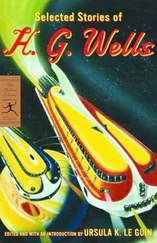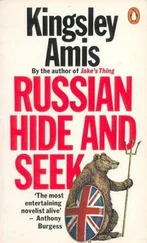After completing a number of strafing runs at their target, and having dropped on it their collective bomb-load, amounting to something not far short of half a ton of explosive, the seaplanes rendezvoused with the Tirpitz . Two airmen were lost. Those killed in and around the White House ran into scores, but the moral effect of such a daring stroke was incalculable.
Now, by an assiduously reconnoitred route, Tirpitz continued her long journey to the south. Round the tip of Florida she steamed, through the Yucatan Channel between Cuba and Mexico, then down the Caribbean to her third and final objective.
III — The Combined Operation
During the night of 16th/17th December, Yamato and Tirpitz took up their stations off the two ends of the Panama Canal, each vessel out of range of the shore defences. At a previously agreed time close to first light, both commenced bombardment of the sections of canal nearest them. After two hours the Tirpitz , whose primary ammunition had started to run low, discontinued fire, and a little later Yamato followed suit.
There were altogether six double locks in the canal system, each of great mass and strength. All lock walls rested on rock foundations and were over 80 feet in height. In the case of the outermost locks, the walls contained over two million cubic yards of concrete. Nevertheless the concentrated broadsides of the two great battleships caused multiple breaches in both. What with severe consequential flooding and damage to permanent installations, it was estimated from reports reaching the Washington office of the canal that, even under normal conditions, repair and reopening could be expected in months rather than weeks.
Before the preliminary investigations were complete, Yamato and Tirpitz had reached home and safety, having accomplished their part in the shaping of history.
IV — The Sequel
The Empire of Japan had declared war on the United States of America in a proclamation date-timed 11.30 p.m. on 11th December, but unfortunately delayed for some hours before it reached the US Government. At two o’clock that afternoon Joachim von Ribbentrop, as Foreign Minister, had read out to the American chargé d’affaires in Berlin the text of Germany’s declaration of war.
The combatant Powers continued in a state of war seven full days. At 11.00 a.m. on 18th December, President Roosevelt delivered an address to both Houses of Congress and, by simultaneous radio broadcast, to the nation at large. The text ran, in part:
It is with a heavy heart, my fellow Americans, that I stand before you this day. You will all share my feelings of shock, sorrow and indignation at the appalling carnage that resulted from the Japanese surprise attack on the cities of Los Angeles and San Francisco. The German raids on the East Coast cities of New York and Washington, DC, though smaller in scale, were no less dreadful and demoralizing. In the nation’s capital I myself came under enemy fire, for a single instant only, but long enough to kindle in me a special sympathy with those men, women and children who really suffered.
America was still reeling from these heavy blows when the news arrived of the virtual destruction of the Panama Canal. That canal… is in a very real sense America’s lifeline. Denied it, my Service heads advise me that the possibility of one day defeating in war two such powerful and such implacable adversaries as Imperial Japan and the German Third Reich is not non-existent but is hopelessly small, far too small for the substantial risk of total defeat to be run. Therefore, as your Commander-in-Chief, I hereby order all American forces to lay down their arms totally, finally and forthwith, pending the signing of a peace treaty. My fellow Americans, the war is over!
Now, I call upon you all to join with me, at this late hour, in returning henceforth to our traditional path of neutrality amid foreign conflict. Let us forgo any thought of revenge and pursue the proud role of beacon of liberty and democracy, by whose light other nations may in the end return to the paths of peace and goodwill.
Necessary adjustments in the status of certain of our overseas territories, and in some of our domestic arrangements, are in the process of being settled and agreed. As soon as the details shall be finalized…
The adjustments referred to by the President turned out to comprise the cession to Japan of all America’s Pacific territories, including the Hawaiian Group with the Pearl Harbor base, Guam and Wake Island, and to Germany of Puerto Rico, while the Panama Canal Zone passed under the tripartite authority of the United States, Japan and Germany. The domestic arrangements concerned were naval installations in the continental United States. The US Navy was to be progressively reduced to fishery-protection and coastguard vessels.
When these details were after some days released to the American public, some revulsion of feeling occurred, and there were riots and disturbances from ocean to ocean, though not as violent or prolonged as those that followed the original bombardments.
Besides, it was too late.
From A History of the Second Great War, 1939/A–1943/A by Michael Bridgeman
Josef Goebbels Professor of Modern History in the University of Oxford
This piece by Kingsley Amis originally appeared as the Introduction to the 1987 edition of Collected Short Stories .
These are nearly all the short stories I have ever published; I omit ‘The Sacred Rhino of Uganda’ (1932) as uncharacteristic. I wish there were more of them, and not only because I should be that much richer if there were. For one to an extent committed to the novel of standard length (which I take to be in the region of 75,000 words) and to producing fairly regularly too, setting out on something of a different order of size, something that hardly need do more than get as far as a second page in order to have being, is a busman’s holiday certainly, but still a holiday. From having to keep twenty Indian clubs in the air at once you suddenly find yourself given licence to get by with two. And if you drop one of those, what does it really matter? A couple of botched pages can be filed sine die or even scrapped; a couple of hundred — well, I hope it never happens to me.
If shorts are so angst-free, why not write more of them, perhaps switch to them? Partly because (for that very reason, I suspect) short-story ideas or starting-points come to me rarely, as can be seen. Novel ideas turn up with no greater frequency but, in their different case, quite fast enough (touch wood). Each sort of idea declares itself as such instantly, simultaneously with its dawning. For instance, the moment I thought of the word that Courtenay says to Barnes near the end of ‘The House on the Headland’ I knew I had a short story and also that it would be, or seem to be, a secret-service story. Whereas, when once in Tottenham Court Road a taxi hailed by an Asian ignored him and stopped for me instead, I knew I had a novel coming and also that it would be about a rich fellow of progressive views.
All the same, a glance will show that my kind of short story has a strong affinity with the novel; its scale is different but its internal proportions, the relative parts played by dialogue, narrative, description, are alike and make the two read alike. And the stories are telescoped novels in that it would be feasible, however savagely boring the result (and the process), to draw them out to near standard length. Potter’s earlier life in the timber yard and something of his marriage could be stuck on to the front of ‘Dear Illusion’, but Sue Macnamara could not be brought into any of that and so the structure would be deformed. The one story here that has to begin and end where it does is ‘Mason’s Life’ — almost true too of the four SF-drink pieces. Anyway, the things that only the short story can do, the impression, the untrimmed slice of life, the landscape with figures but without characters, make little appeal to me. This collection is really one of chips from a novelist’s work-bench. I say so without complacency. A novel may, indeed in certain respects does, call for not only more sustained but also more intensive effort than a story; even so, a volume of Kipling’s stories, say Life’s Handicap , offers stiff competition on merit to Portrait of a Lady, Tess of the D’Urbervilles, Almayer’s Folly or any other novel of the period. Well, few writers move with equal facility in both forms. Graham Greene seems to, though.
Читать дальше












